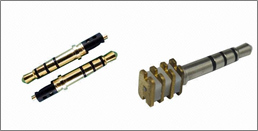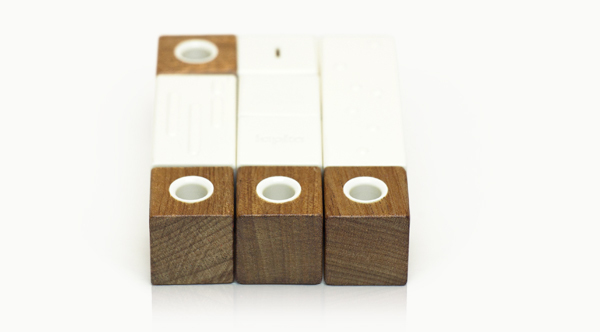Development of gadgets for smartphones: health 2.0 and other topics
Our today's post is timed to the Promwad team ’s birthday. 10 years ago - at the beginning of June 2004 - a small group of graduates from a technical university from Minsk founded a company that became one of the largest design centers in Eastern Europe with a full cycle of custom-made electronics development: from idea to mass production.
We have already talked about the history of the development of Promwad in its first “ Personal experience: hobby = business? ”, Prepared the instruction“ How to create a new product for the electronics market ”, and then during the year wrote another 25 articles on various aspects of designing modern electronic devices for the global market.
This time we will share our experience in developing mobile gadgets for health and environmental monitoring and analyze the latest market trends in this area.
Mobile gadgets, the intellectual environment (ambient intelligence) and the Internet of things are among the most popular modern trends in the development of consumer electronics. They bring the thinking of engineers and programmers beyond a specific device into a new dimension, covering almost the entire human environment. At the junction of computer science, electronics, ergonomics, and artificial intelligence, a new world emerges in which people are surrounded by an intuitive interface built into various things that they use in their daily lives — home electrical engineering, cars, mobile devices, lighting and power systems.
New technologies allow you to design electronic devices and mobile applications for a variety of applications. One of the most popular areas today is the development of new mobile gadgets for caring for users, the so-called “health 2.0” trend, in which users are actively involved in the prevention, monitoring and diagnosis of diseases.
Leading component manufacturers take this trend into account in their product line, releasing low-power microcontrollers with a different set of peripherals. Various gadgets for smartphones are gaining increasing popularity in the world: blood glucose meters, dosimeters, moisture meters, radiometers, nitrates meters in products, adapters for various medical equipment (heart rate meters), etc.
In the process of developing such devices, it is important to choose the optimal technology for integrating the mobile gadget with the smartphone itself. The list of available options includes:
- Power and Data Connectors (microUSB, Lightning and Apple 30-pin)
- Wireless interfaces (NFC, WiFi, Bluetooth)
- Audio Interface (audio jack)
Each of these technologies has its advantages and disadvantages, we consider them in more detail:

1. Power and Data Connectors
(microUSB, Lightning and Apple 30-pin)Compact size and low power consumption are basic technical requirements for mobile gadgets. Using the power connector and data exchange to connect to the smartphone, we solve two problems at once: the gadget receives not only information, but also power. And if we consider a special case - working with microUSB - then the development will be inexpensive and relatively simple.
However, these advantages overlap a serious drawback - we can not make a universal gadget for different types of smartphones (iOS vs Android). Moreover, when working with the Lightning connector and the 30 pin Apple, we will have to get specifications for the data transfer protocol and spend money on the purchase of relatively expensive connectors. Also, the cost of development will increase due to the implementation of the data interface (for both USB and Apple).

2. Wireless interfaces
(NFC, WiFi, Bluetooth)Obvious advantages - the ability to use the gadget at a distance from the smartphone and versatility (we can work with almost any type of device). Disadvantages: high power consumption, size and cost.
3. Audio Interface
(audio jack)In our opinion, this is the most promising choice for a number of projects: low cost, widespread connector for the case and board, protocol flexibility and versatility. In most cases, this option is the only possible unification of a mobile gadget, since Audio jack is the same for all modern smartphones, unlike the information port. Also, when using access to the device through an audio interface, developers do not have to ask the manufacturer for information about the data transfer protocol.

Audio jack can be of two types: with installation in the case and directly on the gadget board
However, this option also has its drawbacks. First, programmers will have to develop low-level gadget software to implement the audio interface exchange protocol. Secondly, it will be necessary to implement an additional power source in the gadget, since the signal power transmitted via the audio interface is not enough. The exception is the iPhone, but in this case more stringent restrictions are imposed on the power consumption of the gadget.
We selected several examples from our portfolio to show the potential capabilities and functionality of electronic devices and mobile applications for monitoring health and the environment:
Lapka - a set of sensors for the iPhone

By order of the Lapka startup, we developed a hull design, produced an installation batch and prepared a nitratomer, a radiometer, and electromagnetic fields and humidity meters for mass production.
The devices connect to Apple’s smartphones via the audio interface, use energy and an iPhone processor, and measurement results are displayed on the screen of the mobile application interface.
Promwad specialists analyzed various wood, plastic and metal samples to select the best combinations for production. Today, these devices are successfully sold in the United States, Canada and Russia.
More detailed information on the project on our website: development of the Lapka hull structure .
Portable dosimeter-radiometer "DO-RA"

By order of Eurasia Intersoft, we developed the design and construction of housings for the DO-RA (DO-RA, dosimeter-radiometer) model range, which are designed to measure radiation. These miniature sensors are connected to various mobile devices, use their energy resources, and the measurement results are displayed in the interface of a special program for Android or iOS.
More information on the project on our website: industrial design for the device DO-RA .
Now we are working on another project in this area, which is focused on the Russian market (the gadget will work with smartphones based on iOS and Android). After the release of the device, we will share with the readers of "Habra" more detailed information.
The media regularly appear announcements of new mobile devices created under the concept of "Health 2.0" - serial devices and working prototypes: sports bracelets; gadgets for the formation of correct posture; iPhone sensors that allow you to make an electrocardiogram and even mobile medical laboratories with a large list of functionality.
Our vision of mobile applications in the field of monitoring health and the environment is as follows: today there are a large number of sensors designed to make measurements, but there are very few applications for analyzing the data that would allow for self-diagnostics, to make a reasonable conclusion about human health and send results to specialists. It is in this direction that we are working this year.
We hope that our publications on Habré were useful for you. We are grateful to everyone who wrote their feedback on our developments, shared questions and suggestions. We still believe that the love of our work is the direct and shortest path to happiness.
We wish you new ideas and successful projects,
team promwad
')
Source: https://habr.com/ru/post/225871/
All Articles